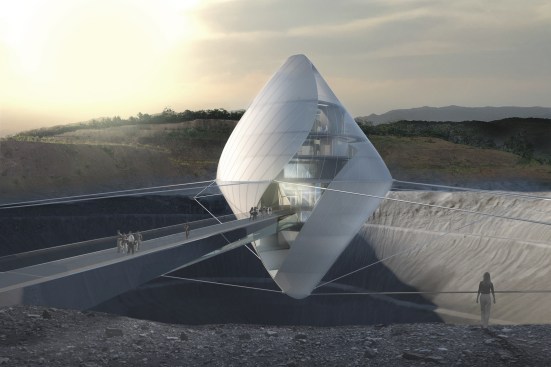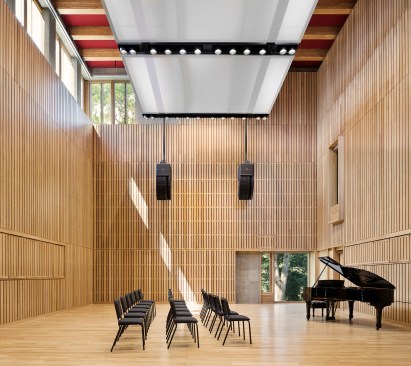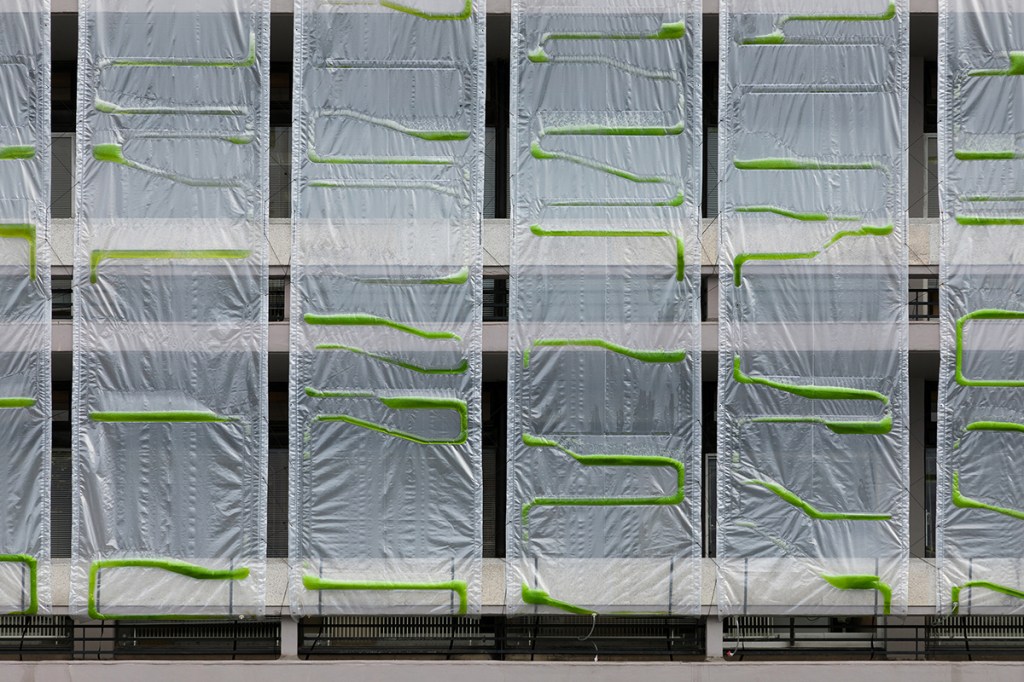London-based EcoLogic Studio has unveiled an urban curtain prototype that can capture and store approximately 2 pounds of carbon dioxide per day. The curtain is composed of 16 modules (each 2 meters by 7 meters) that contain living microalgal cultures. As sunlight feeds the cultures—which then become luminescent at night—carbon dioxide and other pollutants are trapped by the mixture and grow into biomass. Ultimately, fresh oxygen is released from the top of the curtain and the biomass can be recycled into the bioplastic used to make the modules. [EcoLogic Studio]

© Clouds AO
Avatar X Lab building suspended over moon-like crater
Located in the Oita prefecture of Kyushu, Japan, the Avatar X Lab space research campus by New York–based Clouds Architecture Office (CAO) features a diamond-shaped structure suspended over a crater. A partnership between ANA Holdings and the Japan Aerospace Exploration Agency, the project is dedicated to the “advancement of space exploration and development,” according to the CAO. “The campus will consist of several buildings, as well as a moon simulation terrain, which will be used to experiment with tele-operated remote semi-autonomous construction of lunar surface habitats using Avatar robots.” [ARCHITECT]
According to research published in Frontiers, a team of scientists in Spain has developed a method to turn sewage into clean energy. The researchers show that when purple phototrophic bacteria is introduced to wastewater and paired with the application of an electric current, the mixture can generate hydrogen gas for electricity production. Meanwhile, nearly 100 percent of the carbon emitted during the process can be recovered. “One of the most important problems of current wastewater treatment plants is high carbon emissions,” said co-author Daniel Puyol of King Juan Carlos University, in Madrid. “Our light-based biorefinery process could provide a means to harvest green energy from wastewater, with zero carbon footprint.” [ScienceDaily]
Following the leak last week of its prospective HQ2 sites, tech giant Amazon formally announced on Tuesday that its forthcoming, much publicized headquarters will be located in the Long Island City neighborhood of Queens, N.Y., and in the Crystal City neighborhood of Arlington, Va. [ARCHITECT]
The U.S. Green Building Council has launced LEED Zero, a new program that certifies buildings that have net-zero operations for carbon emissions, water and energy use, or waste management. [ARCHITECT]

Michael Moran/OTTO
Rehearsal hall, Pendleton West
In our latest Innovative Detail feature, Philadelphia-based KieranTimberlake was inspired by the wooden sounding box of violins and other instruments for its design of a music hall addition at Wellesley College’s Pendleton West arts building. The result is a the double-height space wrapped almost entirely in a custom wood acoustical wall system. [ARCHITECT]
